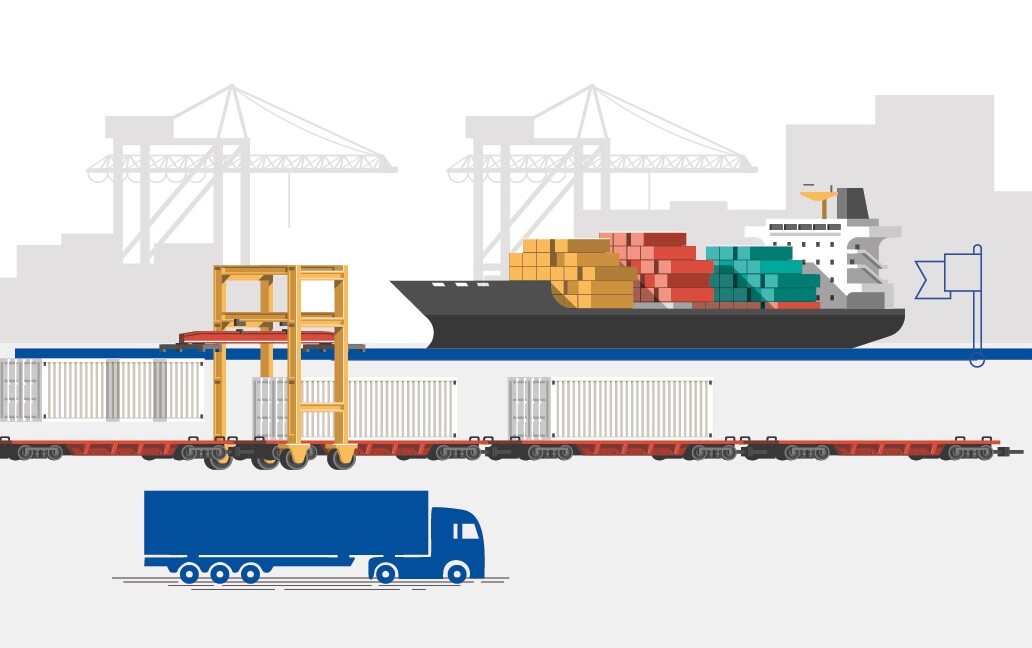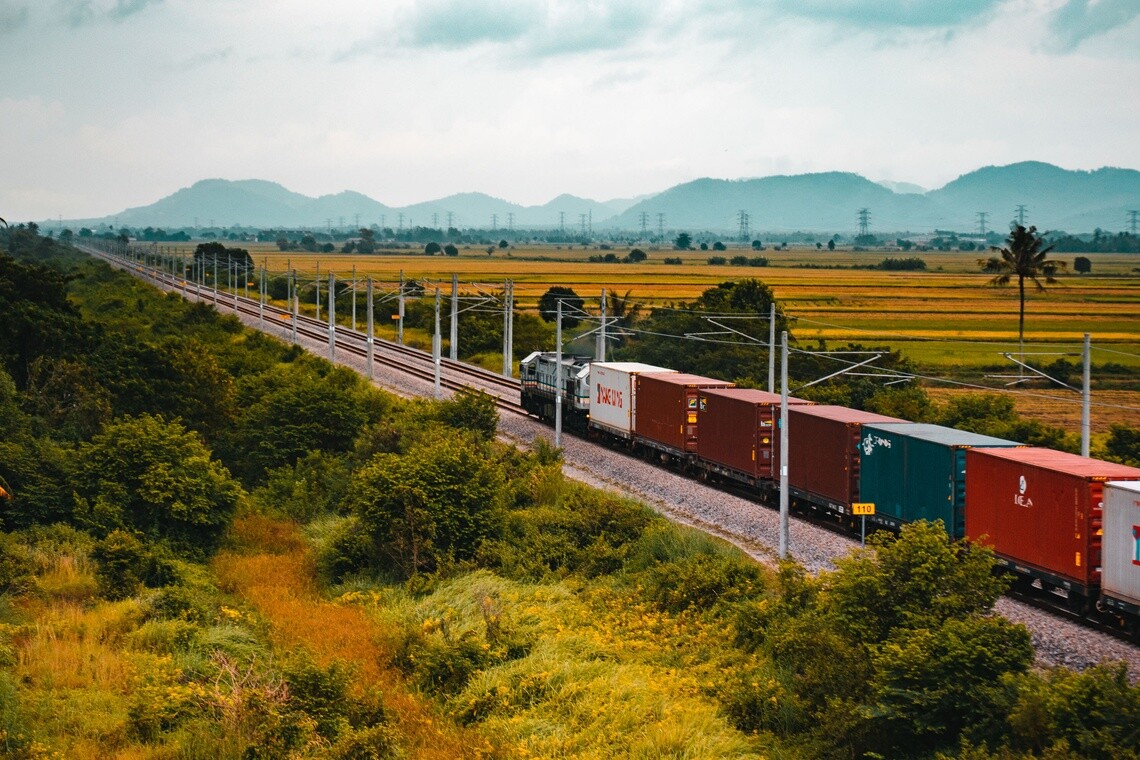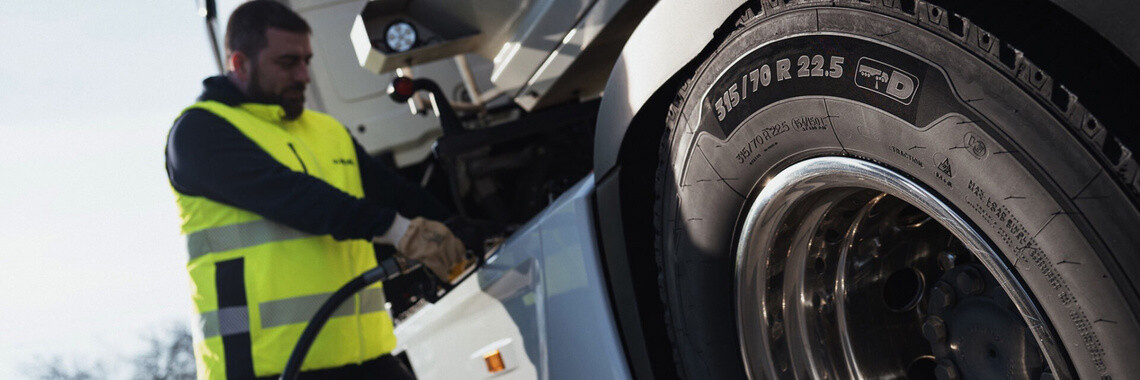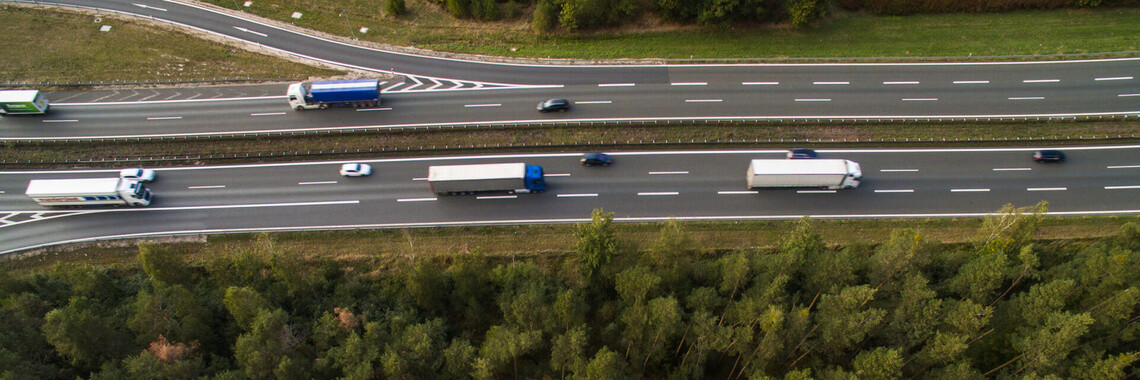
Intercompany Collaboration: How sharing resources can help to reduce fleet costs
Intercompany collaboration and sharing resources are an effective way of building business and optimising fleet costs. We recently sat down with Michelin Network Capacity Analysts Cyril Faure and Denis Brangeon to learn about what types of resource sharing are possible, as well as explore a few examples of how Michelin has been collaborating with partners. Benefits are numerous, from lower CO2 emissions to happier truck drivers, not to mention helping reduce fleet costs.

Cyril Faure and Denis Brangeon gave their insights on how fleet managers can share their resources
Michelin Network Capacity Analysts Cyril Faure and Denis Brangeon
What exactly is intercompany collaboration and resource sharing?
Just what it sounds like. The different stakeholders in a business relationship pool the resources of their choice so that the final sales offer is stronger and less onerous for all involved. For transport, sharing resources can be a fuel-efficient way of cutting CO2 emissions, improving attractiveness for drivers and reducing fleet costs. Sharing resources can take on many forms, including pooling drivers and trailers, collaborating with train and ship companies, and working with road transport operators which are in other countries.
It sounds like resource sharing can really represent a pivotal strategy to reduce fleet costs.
Definitely. At Michelin, one example of how intercompany collaboration can be really advantageous is when we put out a call for tenders where preference is given to the offer with lower CO2 emissions, at equal or better cost. To win, a fleet manager may need to find a train, ship or electric truck partnership that will increase the attractiveness of their offer. Sharing resources therefore changes how you think about your business and the operating costs. It can sharpen your competitiveness. And we’ve found that our haulage partners find more business opportunities.
In that type of situation, how do resources find each other? What technology is there that helps?
Several digital platforms exist already for resource sharing. Fleet managers are probably already familiar with digital freight platforms that help them travel with full truckloads. One of the major fleet management systems that we work with is Transporeon, which brings all players in the world of goods transportation together. Jobs are posted with their specific requirements, and fleets and other transporters can negotiate their offers, collaborating to find the best solution for the shipper.
Let’s go into more detail about how this works. Can you explain how some fleets are sharing resources?
Some hauliers have started to explore intercompany collaboration so that they have access to a wider range and/or a larger number of customers. Michelin, a shipper with a European industrial footprint, must cover a wide geographic area. Sharing resources with haulage companies from other countries makes it possible to pitch for long-distance routes without truck drivers having to go the whole way. Each haulier can cover its own geographic area. Incidentally, this also makes finding drivers easier, since their routes are more optimised. They drive shorter distances and get to go home at night.
Sharing resources with hauliers from other countries makes it possible to pitch for long-distance routes without truck drivers having to go the whole way.
Earlier you mentioned rail and boat shipment. Does that mean that hauliers could also cooperate using intermodal transportation?

hauliers can also cooperate by using rail or boat shipment to reduce their costs
This type of intercompany collaboration really increases the volumes that can be carried, plus it’s a great way of reducing CO2 emissions. For haulage businesses, this helps with fleet management costs as they only have to deal with the train or ship drop-off and pick-up segments of the total journey. That’s a real benefit for their drivers. Generally speaking, in this type of situation, the offer needs to be turnkey. Michelin doesn’t invoice several suppliers to the customer for one transaction.
It certainly sounds like when resource sharing works, it really pays off.
Yes, this sort of collaborative outlook can be a win-win for everyone: shippers, hauliers, ships and trains, and customers. We currently have over 230,000 unfilled truck driver positions as of 2023, and in a few more years that’s going to increase to around 745,000 due to driver retirements1. It is harder to find truck drivers who specialise in driving across the continent. Intermodal transport, and sharing resources in general, really helps in managing long distances and building capacity. Intermodal transport in particular is also important for lowering carbon emissions, something that customers appreciate, and communicate to their own clients.
…sharing resources in general, really helps in managing long distances and building capacity.
So we’ve looked at how Michelin’s suppliers combine their resources. Do you ever collaborate with your suppliers?
Yes, regularly. One project we’ve been working on is better tracking of our shipments. Everyone is familiar with the ‘Swiss cheese’ effect that occurs when a shipment is ‘lost’. There’s a set of domino calls one way between the warehouse, shipper, haulier and driver to find out where a load is, and then back the other way as everyone calls back to update each other. That leads to a lot of lost time. We also have on-time delivery as one of our KPIs, and the habitual way of tracking it generates reams of data that the contract manager and haulage business have to sift through using only GPS data. This is also time-consuming and can increase fleet cost management, not to mention it inaccurate. We therefore met with a small number of fleets to begin with and asked them to equip their trucks with a tracking device provided by our digital partner. This partner also created a dedicated project manager, and that really helped in fine-tuning the service and providing the support the haulier needed. Now we always know where our loads are. Operations are smoother at loading docks; team organisation is easier, and our data is clear. With this intercompany collaboration between ourselves and our hauliers, it’s simpler for everyone – and that includes our customers.
Does it always work out so well? What are some of the challenges involved in setting up this kind of resource sharing?
For turnkey solutions, there’s always the risk that a train or ship route gets cancelled, that it’s too expensive or that shippers don’t have enough volume to fill up their allotted containers. When this happens, shippers can collaborate to build enough volume – to create a full shipment or even to open a new route. Distance is also a factor. If the whole point is to not drive across the entire country – or continent – then you need someone at the other end to pick up the load. This can lead to intercompany collaboration between hauliers at both ends of a shipment. Generally speaking, all stakeholders and fleet vehicles need a certain amount of agility to manage the flows.
Do you have an example of intercompany collaboration for intermodal transportation?

reduce your fleet costs with through intermodal transportation
It’s something we’ve been doing for Volvo for a while now. We send tyres between Spain, Italy, Poland and Romania using train services for the longest portions. Our hauliers buy options on the trains to reserve space for the containers they transport. We have pretty regular flows, so they also have good business visibility. Intermodal transport like this is entirely accessible for smaller haulage firms. On a side note, we also support some of these fleets in using biofuel with 60%, even up to 80-90%2 fewer emissions.
It sounds like the benefits of resource sharing outweigh the challenges and can even reduce fleet costs in the long term.
I would agree. Sharing resources as we’ve discussed above usually leads to strong and effective results for all stakeholders. Fleets optimise and find new cost savings. They have more customers, and their drivers run shorter distances with fuller trucks. Drivers are happier, so they stay longer in their job. intermodal transport solutions have a positive impact on emissions and relieve drivers of the long hauls. Also, if shipments are regular, drivers and operating personnel get to know each other. Working relationships are more rewarding for everyone. From our experience, there is also a hugely positive effect on everyone involved. We understand each other’s challenges better, we identify more opportunities for working together. The overall work environment is constructive.
Intermodal solutions have a positive impact on emissions, and also relieve drivers of the long hauls.
What advice would you give to small and medium fleets who are interested in sharing resources?
We would say go for it. Take the initiative. You can start by defining what you can and are willing to do: sharing drivers, trailers, and getting into intermodal shipping. You need to talk to your customers. Find out what their vision and strategy are. What do they need? How can you help? Where can you create synergies, and how can you collaborate better together? As you talk, ideas and opportunities naturally come to the surface. You’ll be sharing resources and reducing fleet costs in no time!
-
1. IRU 2023 Europe Freight Driver Shortage Report
- https://www.iru.org/resources/iru-library/europe-truck-driver-shortage-report-2023#:~:text=Europe%20has%20over%20230%2C000%20unfilled,due%20to%20
- driver%20retirements%20alone.
-
2. ALTENS Carburant alternatif: PUR-XTL (HVO100)
- https://www.altens.fr/produits/pur-xtl/

gettyimages 930571046
car going fast on a road by night







